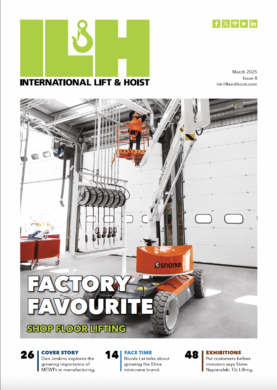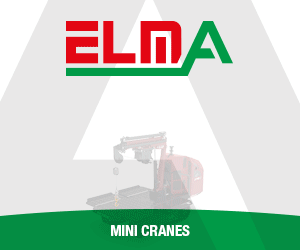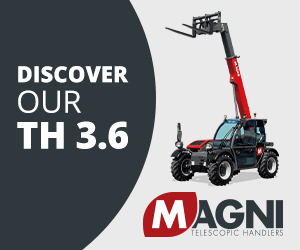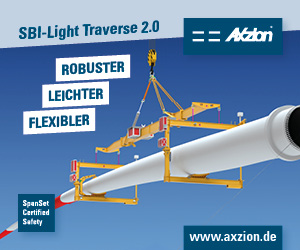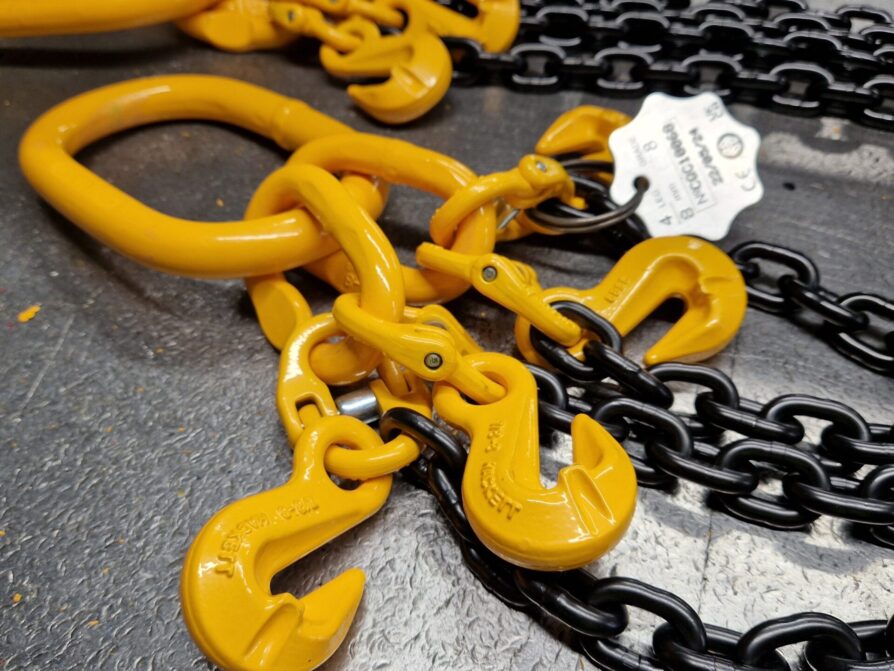)
Chain reaction
Despite your best intentions, your business might be using non-compliant lifting chains. Ben Burgess, director at William Hackett, highlights why.
The internet has transformed how businesses operate in the B2C and B2B arenas, providing increased choice and more purchasing power for consumers. We can find multiple sellers with a couple of clicks, meaning vendors must vie for our business. However, this can be a double-edged sword, as unscrupulous companies undercut their competitors by selling products that fail to comply with the relevant international standard.
This can have huge safety implications, as we have seen with e-bike battery fires in the UK. The number of fires linked to lithium-ion batteries in the UK increased by 46 per cent in 2023, compared with the previous year, according to recent research from business insurer QBE. The Chartered Trading Standards Institute (CTSI) has pinpointed the use of non-compliant batteries as the main cause of what it called “an alarming spate of household fires” which have claimed multiple lives and destroyed property worth millions of pounds. London Fire Brigade also warned against cheap batteries sourced online, which do not meet the correct safety standards.
Put simply, people are buying batteries in good faith, unaware that these products do not meet the required standards. Unfortunately, some of these batteries are catching fire, with devastating results.
Similar incidents have been reported with cordless power tools, where the owners have bought a cheap replacement battery that has resulted in a fire. This has led to plant and tool hire companies becoming far more vigilant on compliance when it comes to buying batteries – a lithium fire in one tool can cause a chain reaction with devastating consequences for their business.
In good faith
Of course, we have been here before, many times, and we always adapt to better identify and manage new risks. What usually happens is, technology advances and standards are established to support these advancements, but parallel to this, some will seek to find a shortcut in order to gain a commercial advantage. However, ultimately the industry catches up, once again ensuring compliance.
Typically, once a product becomes established, these issues cease to exist. Therefore, one area of our industry you might think is safe is lifting chains, a reliable staple for almost all lifting professionals. However, there is a similar underlying problem in this market segment.
William Hackett has seen an increase in Grade 8 lifting chains being marketed as compliant, but in reality they do not meet UK standards. In the UK, lifting chains and chain slings are covered by the standard BSEN 818-2 and -4. These specifications are designed to ensure that the chain can cope with the variety of forces and pressures that can come into play during a lift.
We have identified chain and chain sling systems for sale in the UK that use very specific wording to mask their non-compliance. At face value, that wording makes these products sound fully compliant, but in fact they are only partially compliant. As with the batteries issue, companies are buying these chains in good faith, not realising the implications.
If you are a buyer or specifier of lifting chains, this is potentially a hidden risk for your business that could prove dangerous to your colleagues and costly for your company.
Read the small print
Unfortunately, we’re in a situation where it’s vital to read the small print. Some vendors are using what we consider extremely ambiguous wording, such as “generally in accordance with BSEN 818-2”, or “meets the WLL performance requirements of BSEN 818-2”. Without careful consideration, you can see why it is easy to mistake this for complete compliance with the standard.
Read any supplier terms and conditions and you’ll spot that the onus is on you to use the product as intended. However, we would argue that these chains are being misrepresented.
Independent analysis
As a company with a hard-won reputation for safety and quality in the lifting industry, our policy is to constantly analyse products that raise concern to discover exactly what they are. We commissioned an independent laboratory inspection of the products in question and found that the chains are not compliant with BSEN 818-2. This analysis included chemical composition and material microstructure.
What we found was deeply disappointing. Material composition is critical because the steel needs to comply not only with the mechanical properties outlined in EN 818, but also must possess adequate low temperature ductility and toughness to provide resistance to impact loading. Ductility – a material’s ability to be stretched without breaking – is vital as it gives the chain resistance to failure as a result of shock loading, a common cause of chain failure.
Compliance implications
It is worth noting that nothing illegal is occurring here in terms of how these chains are marketed. The products in question are not being mis-sold; the wording used is carefully constructed to ensure it is on the right side of the law. However, there are significant implications around safety, compliance, and liability for anyone using these non-compliant chains in the belief that they comply with the current British Standard.
The implications are clear: if you should be using a non-compliant chain and the worst happens – a failure leading to injury, death, or property damage – then liability comes into play. As mentioned earlier, both the law and your insurance policy place the onus on you to ensure that your products are safe to use, and the first check will be compliance with the correct standards.
If an investigation by the health and safety authorities or your insurance company determines that you were using non-compliant lifting chains, then legally speaking, you will have to prove how you determined that those chains were safe. When an incident occurs, would you rather be defending a fully compliant chain sling in line with the British Standard, or one that was purchased on a cost saving basis?
Protect your business
There are some straightforward steps you can take to protect your business.
Firstly, consider the price. If it looks too good to be true, it most likely is – a chain for sale at considerably lower than the market value means it is probably intended for a different purpose.
Secondly, check your policy on compliance when specifying or buying Grade 8 chain and slings. Ensure that your buyers make all vendors aware that their products need to meet all aspects of BSEN 818.
Thirdly, read all documentation extremely carefully. Remember, all G8 chain and slings should state they are “compliant to BS EN 818”. There is no room for ambiguity here, either it is compliant, or it isn’t. Statements such as “generally in accordance with”, or “meets the WLL performance requirements” are not the same as “compliant to”. Ask the vendor direct questions about this and be wary if you do not get direct answers! In this way you can be confident that any lifting chain you purchase is fit for purpose.
Fourthly, buy only from trusted and reputable vendors. Work with suppliers who have a long track record in safety and compliance, have achieved ISO certification, and are active supporters of LEEA.
William Hackett’s Grade 8 chain is embossed with manufacturer’s mark and grade (MA8) and has class-leading batch code traceability. All sizes of our Grade 8 are proof tested at manufacture to 2.5 times the given working load limit and have a range of diameters from 7mm – 32mm. William Hackett Grade 8 chain is suitable for use in a temperature range of -40°C up to 200°C without reduction in working load limit, reductions apply up to 400°C.
Be part of the solution
Non-compliant Grade 8 lifting chain is being marketed and sold in the UK right now, in plain sight. We can all play our part by being aware and to highlight this issue with the wider lifting industry.
If you have any questions or concerns, we’re always happy to have a conversation – get in touch via. www.williamhackett.co.uk



